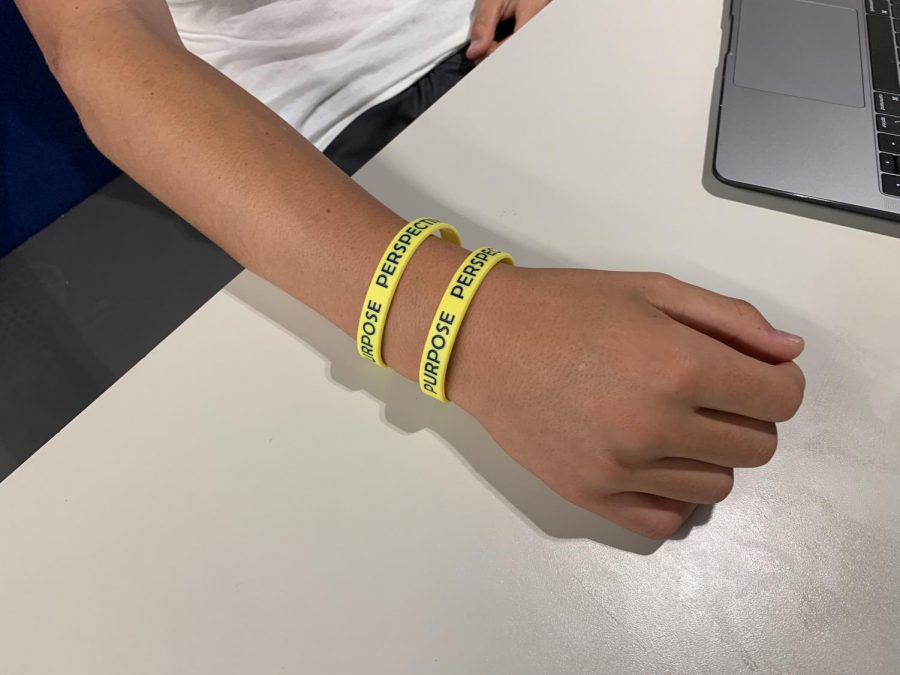The Three P’s: A Helpful Addition or a Waste of Time?
At the first assembly, student council passed out wristbands with the three P’s written on it. Students are encouraged to wear them to keep these values in mind. Staff Photo: Chase Hurwitz.
September 16, 2019
Presence, purpose, perspective, and a free wrist-band. That, in my book, is a quality assembly. Student council has unveiled the Three P’s to try to help students ground and humble themselves.
I have been critical of similar attempts to refocus students in the past. Especially in advocacy, it feels like we’re presented with brief activities where the aim is to help us find a sense of perspective we never knew we had, all in the span of 45 minutes. Although these activities are well-intended, it feels too rushed for students to internalize the message. In theory, I think the Three P’s could be a great idea that could really benefit students, as long as the student council and administration integrate it in a productive way; however, realistically getting students to adopt this mantra would require many to drastically shift their mindsets about work and school.
To reiterate, I’ve been skeptical of similar ambitions to try and center students in the past, especially in class meetings and advocacy because it feels like Menlo teachers and student council members poorly introduce them. As students we are presented with two routes: to either become overwhelmed by the excessive mentioning of the concept, or to forget about the initiative because it’s just simply a vague memory from months ago.
For example, the “study smarter” seminar all freshmen had to go through once a week during the first semester, instead of normal tutorial time, quickly aroused irritation. The meetings where students were taught how to better organize their materials and time in order to improve study habits were so frequent that students felt like they just were not as productive as tutorial. Menlo students are busy, and if they feel like their time could be better spent, it seems like they will quickly voice that opinion.
The way that student council presents the Three P’s to us is really going to determine whether students actually internalize these ideas or if it just goes right over our heads. Announcing it at the first assembly of the year is not enough to make it stick; it’s going to have to be incorporated into class meetings and advocacies. At the same time, the tricky part for student council is not overwhelming us with the Three P’s. Students always have a tight schedule, so will see this as a waste of time if they’re constantly bombarded by this initiative if not presented in a meaningful way. A student’s work is usually their top priority, so, if they feel like the Three P’s somehow takes time away from them their completed assignments, they will automatically reject it.
Maybe I need to incorporate a little more presence right now, or perhaps perspective, as I write this sentence at 12:50 a.m. As I finish this at a completely unreasonable time, I’m proving Menlo students’ main priorities are to finish their work and assignments, not to stop their tasks in order to be present and have a deeper perspective. Talking about the Three P’s as an objective at assembly was the easy part. Getting students to actually think differently and change their mindset will be a bigger challenge.
Obviously living by these ambitions would be ideal, but it’s easier said than done. The consequences to over-prioritizing the Three P’s over your work may seem small in the short run, but long term, the cost — for example not fully completing your homework — could pile up.
In the end, it seems like for students to really adopt this mantra, many of us have to drastically shift our mindsets to be less work-oriented and instead become conscious about ourselves and our long-term ambitions.



